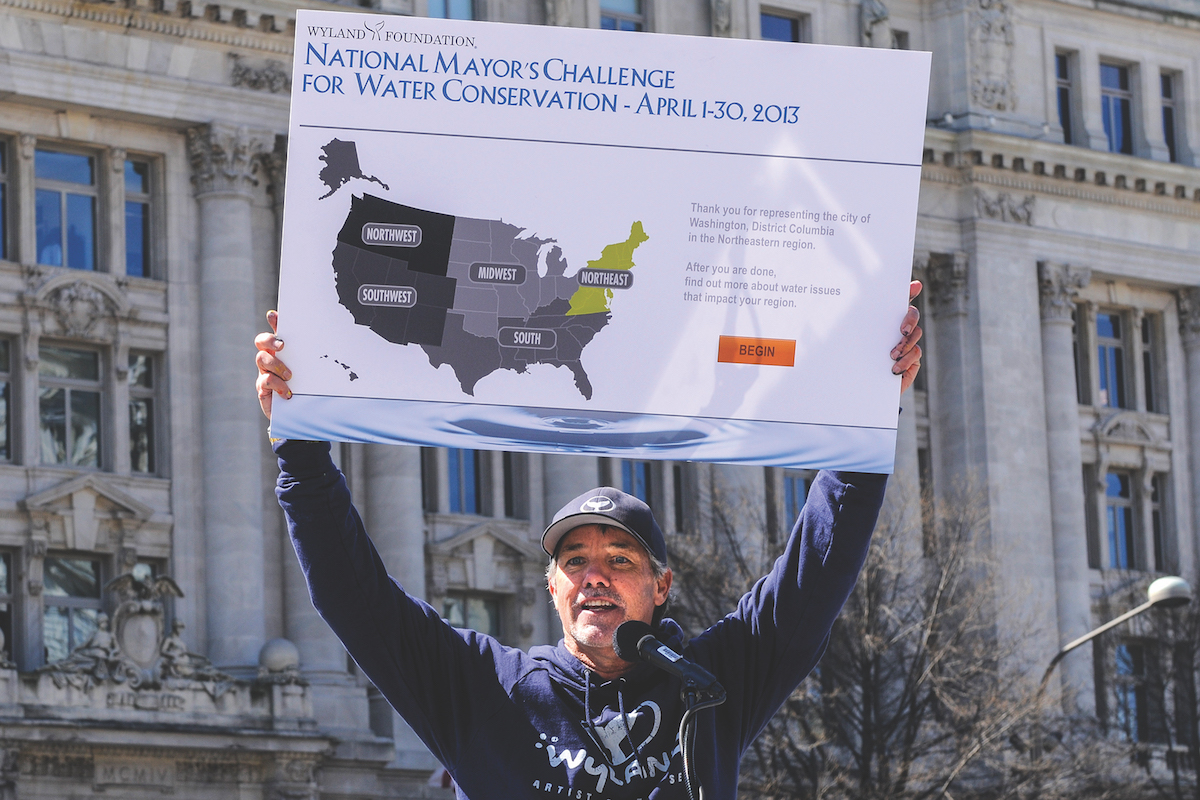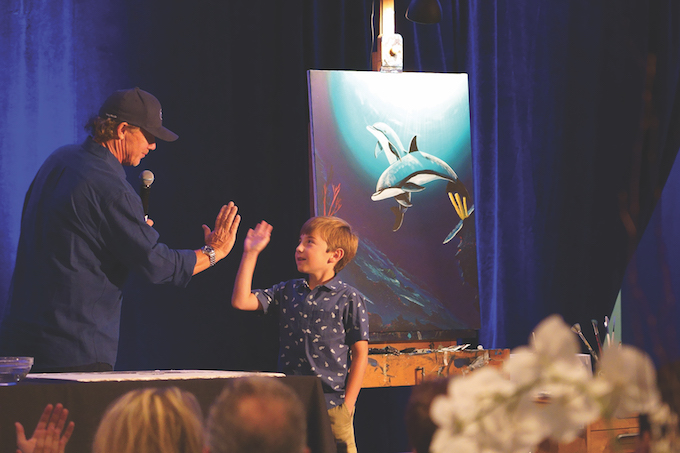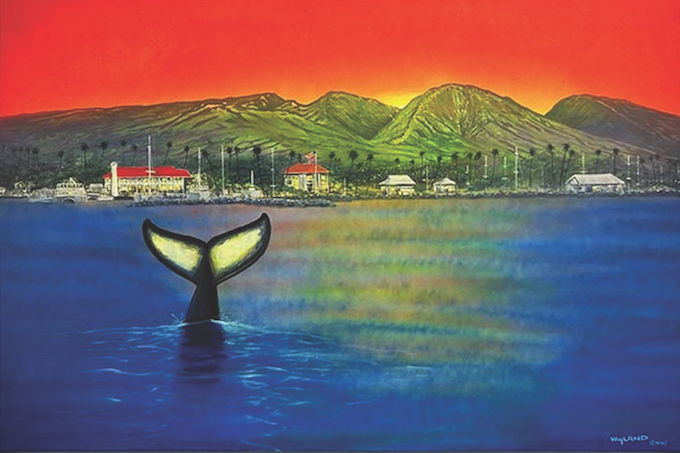
Artist Wyland makes waves as a dedicated marine conservationist.
By Tanya A. Yacina
Wyland’s name is equally synonymous with art and marine conservation, positioning him as the quintessential Laguna Beach resident. After visiting the beach town with his family in the early 1970s, he moved here and opened his first studio gallery in 1978.
“I’ve often said that Laguna Beach is not only one of the most beautiful cities in Southern California, it’s one of the most beautiful places anywhere, and the habitats offshore are equally vibrant and amazing,” Wyland notes.
After arriving in town, he quickly realized he was exactly where he was supposed to be. The artist colony—home to the Sawdust Art Festival, where Wyland showed his work for six summers—also happens to be deeply connected to its offshore waters, which are now a Marine Protected Area.
“My connection to Laguna Beach is deeply rooted in my passion for marine conservation. I’ve always been attracted to its rich marine life and community spirit,” Wyland explains. “I had one of my formative experiences here, having seen a whale for the first time on a family vacation. … Later, after leaving art school at the [College] for Creative Studies in Detroit, … I spent years as a young artist selling my art at the Sawdust festival and got to know so many people here—many of them, like Tom Klingenmeier, who I remain friends with to this day.”
Wyland says his art is not only a reflection of Laguna Beach’s commitment to the environment, but also a bridge to sharing that level of commitment to marine conservation with millions of people around the world: Over a 40-year period, he has painted more than 100 whaling walls in more than 13 countries to further bring awareness to ocean health. In addition to his paintings and sculptures, he has created artistic gifts like jewelry and home decor, released numerous marine-themed books and founded a nonprofit, the Wyland Foundation, in 1993 to continue to inspire people to take action through art, science and conservation. The artist has also taken on some unique projects, like designing the hull of the Norwegian Bliss cruise ship plus surfboards for the U.S. Olympic surf team.
Wyland says there are many ways that people can change the trajectory of the planet’s waterways. Individuals, communities and organizations can all contribute by educating themselves, reducing plastic consumption, participating in local cleanups, supporting sustainable fisheries and funding conservation projects.
Even something as simple as creating art can have a big impact. “Art has the power to evoke emotions and inspire change. That’s part of everything I do as an artist and everything the Wyland Foundation does as a community service organization,” he explains. “In fact, our newest program, Streams of Hope, incorporates that sensibility, but takes it to another level by bringing in a heightened commitment to community action. I also think art can raise public awareness in a way that other mediums can’t, and [can help] foster a deeper understanding and appreciation [for nature].”
Through his foundation, awareness and giving back, Wyland helps inspire others to preserve and protect waterways around the world.

A Solid Foundation
Established in 1993, the Wyland Foundation is devoted to enhancing ocean health, protecting marine life and educating the community, but has recently shifted its perspective, reasoning that, to make a difference downstream, the root causes upstream need to be addressed. The Wyland Foundation is focused on education, but also encourages home-based volunteer actions to stop problems at the source. Wyland says an overwhelming response to this year’s National Mayor’s Challenge for Water Conservation included more than 400,000 action commitments in over 2,000 cities. Additionally, the Wyland Clean Water Mobile Learning Center—a museum on wheels—has inspired more than 20,000 students this year. The foundation’s annual gala, which serves as the primary means of underwriting its programs, was held Nov. 12 with a behind-the-scenes look at Wyland’s creativity during a live painting demo.

Whaling Walls
Since painting his first Whaling Wall here in Laguna in 1981, Wyland has painted more than 100 other murals across the globe to promote the beauty and conservation of the ocean—and all for free. Like his original mural, which spans the wall of Wyland Galleries along Pacific Coast Highway, the paintings feature life-size images of blue and gray whales, humpbacks, orcas, dolphins and other sea creatures. Although his initial project was to complete 100 walls—a feat which he finished in China in 2008—he has since gone on to create others in Seattle and Washington, D.C.; he also repainted his original wall in Laguna Beach in 2019. But his final iteration was completed in Cuba in November. “I think Cuba is a fitting one to end on,” Wyland notes. “Our oceans are shared resources, with marine life and currents that move beyond national boundaries. It emphasizes that marine conservation transcends borders.”

Love for Maui
Although his connection to Laguna Beach runs deep, Wyland also has a special relationship with the island of Maui. Wyland splits his time between California, Florida and Hawaii, with Maui serving as a place where the artist has gotten to know the locals and where he can go out on the water to observe whale populations in their natural habitat—which is crucial for his marine-centric artwork. But the August wildfire that destroyed Lahaina also claimed one of his galleries, which opened on Maui nearly four decades ago. “After the tragic fire in Lahaina, … the Wyland Foundation immediately launched a fundraising campaign to support the Maui United Way, and I personally donated and raised additional support through the sales of art,” he says. “… The two art pieces I did following the disaster will continue to generate support.” Wyland’s efforts have already helped garner $70,000 for those helping the local community on the island.
